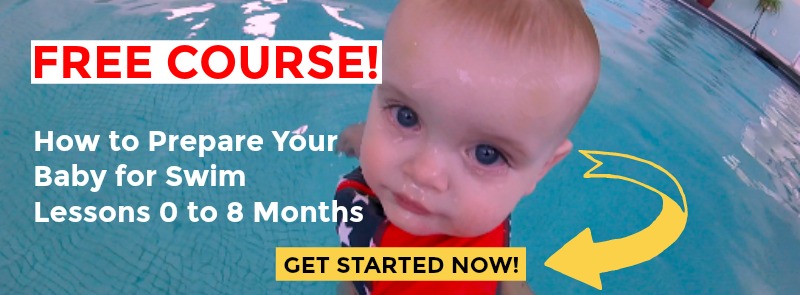 Before you teach your child to glide through water, make sure she can put her face in the water for at least ten seconds, front float for at least five seconds independently, back float for at least ten seconds unaided, roll and retrieve objects from the bottom, before teaching her to propel or glide through the water.
Before you teach your child to glide through water, make sure she can put her face in the water for at least ten seconds, front float for at least five seconds independently, back float for at least ten seconds unaided, roll and retrieve objects from the bottom, before teaching her to propel or glide through the water.
(This post contains affiliate links. This means if you click on an affiliate link and purchase the item, we will receive an affiliate commission at no extra cost to you. Full disclaimer.)
If she’s ready to propel through the water, you can start with floating face down in a streamlined position. Glide through water.
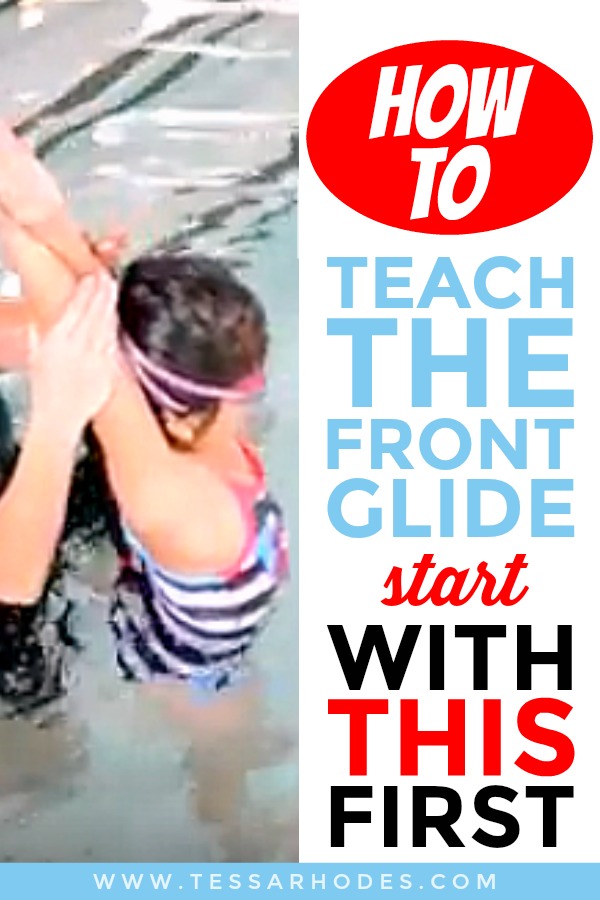
Floating face down in a streamlined position
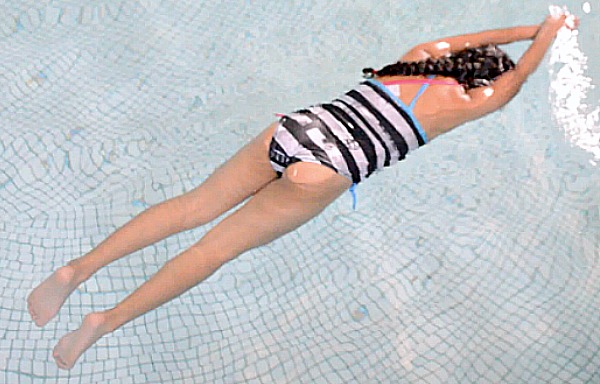
To accomplish a streamlined position, have your child stand with her legs together and straight.
For the arms, I always tell my students to superglue their arms to their ears, then while reaching up to the sky, place one flat hand in front of the other flat hand.
Holding this position have her bend at the hips, hold her breath, put her face in the water and stretch her legs behind her, pointing her toes.
At this point, she should be floating in a straight line from her fingertips to the tip of her toes. Give her a gentle little push. Have her float like this for five or more seconds, then stand up. The goal is to maintain a streamlined position for ten seconds.
Perfect practice makes perfect
Some children can hold this position easily while others may lose their balance. Either scenario is correct. With practice, they will be able to maintain the correct position for the full ten seconds.
Have her try it again and, this time, experiment with the placement of the arms and legs.
Have her move her hands apart. It might be enough to stabilize her. If not, have her open her legs slightly or until she’s balanced. All the while making sure that her head is in a neutral position. By experimenting with the placement of arms and legs, the children are learning about buoyancy and their relationship with the water.
The more relaxed your child is, the easier it will be for her to balance while floating face down in a streamlined position. Once she has accomplished this for ten seconds, move on to the front glide. Glide through water.
Front glide through water
A front glide is when you propel through the water face down in a streamlined position.
Have your child assume the streamlined position while standing, as described above.
Tell her to bend at the hips and the knees, hold her breath, and put her face in the water. Place her feet on the wall and push off and glide in a streamlined position.
Some children won’t bend at the hips, and they’ll just fall into it. Then there are the kids who eventually get how to bend at the hips, but they won’t bend their knees, so they can’t push off with their feet.
It’s like jumping. Have your child stand on the bottom and then jump as high as she can. Now try from the wall.
Sometimes it’s easier to pick up your child and place her feet on the wall. Then tell her to put her face in and push off. Just like jumping off the bottom.
Now have your child place her arms behind her ears. She’ll need to tuck her chin to her chest to accomplish this. This is the actual standard arm placement for the streamlined position. It is essential that your child masters this skill. It lays the foundation for all swimming strokes.
If she can maintain the perfect streamline position for at least ten seconds, she will be ready to add the pull.
Do not underestimate the importance of floating in a streamline position. Have her practice every time she goes to the pool. Even if she has mastered it, it still needs to be part of every lesson. Even Olympic swimmers make this part of their daily swimming drills.
Time to add a pull. Glide through water.
Front glide then one pull
The purpose of a front glide then one pull is to illustrate just how far you can go while exerting the least amount of energy.
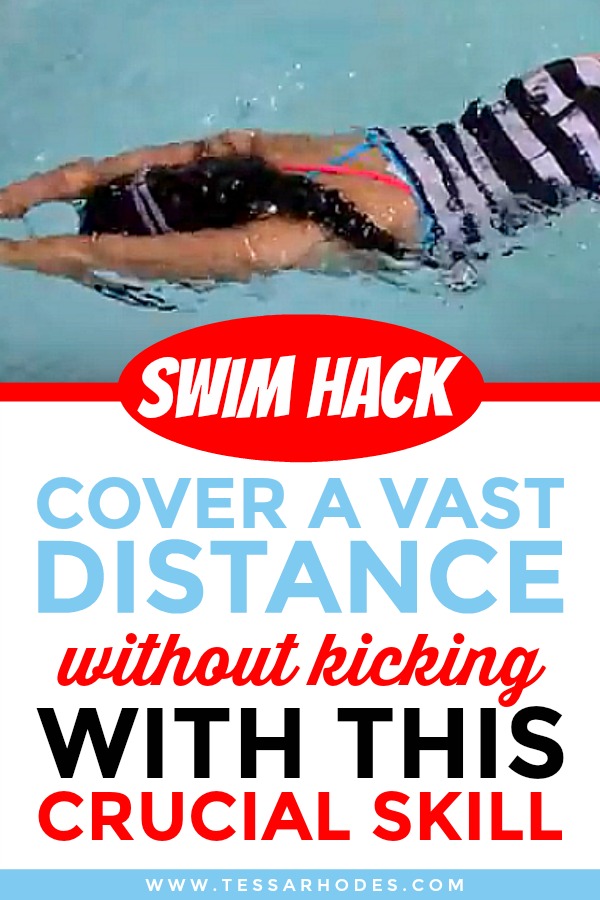
Have your child do a front glide as described above and then when she feels her body slowing down add a pull and see how far it takes her.
The pull is accomplished by sweeping both of her arms all the way around to her thighs.
Make sure that her arms are straight and hands are flat as she sweeps her arms out and around, covering the most area that she possibly can.
Demonstrate this simultaneous arm action out of the water first. See if your child can copy your movements.
Now demonstrate the front glide then one pull (no kicking) to show how far you can go.
Now it’s her turn. She might start the pull too soon, and when she pulls, her arms may come up above the surface briefly. She might also lift her chin during the pull. All of these actions will slow her down and prevent her from getting as far as she otherwise could.
With plenty of practice, she’ll be able to do it beautifully.
Swimming doesn’t have to be exhausting. It is a lesson in knowing that if you can get from point “A” to point “B” and not be winded, then you’re probably doing something right.
It takes very little energy to achieve a vast distance, and this is all accomplished without even kicking your legs. I can do this for the entire length of my pool which is eleven yards. I sound like I’m bragging, but I’m not because eleven yards is not that impressive. I would like to know what distance a competitive swimmer could cover. I’m sure it’s way more than I can do.Glide through water.
Back glide through water
To glide on the back, have your child hold onto the wall or gutter, place her feet on the wall, put her head back in the water (looking up at the sky or ceiling) then gently push off of the wall.
As soon as she lets go of the wall make sure she superglues her arms to her sides, sticks out her belly button and straightens her legs while her feet remain below the surface.
It’s a good idea to use a nose clip when first learning this skill. Some children will push off of the wall too hard resulting in the face going under the water. I also tell my students to hold their breath for the same reason.
With practice, your child will figure out the correct force required to push off from the wall.
Some of my speed demon students have a hard time slowing down, so I tell them to go in slow motion like an astronaut moving through space. It works every time.
Your child needs to be able to perform this skill for ten seconds. Ten seconds of maintaining the perfect body position as previously described. This is essential before adding an arm action or even kicking for that matter. Progressing before she’s mastered the back glide will simply not work.
The back glide is the foundation from which to build. If the foundation is not solid, it will not hold-up if you add an arm action or kicking too soon.
The duck, starfish, penguin stroke
What is the duck, starfish, penguin stroke? It’s a simultaneous arm action performed following a back glide.
To teach this, have your child stand up either on the pool deck or in very shallow water with her arms at her sides.
Tell her to drag her thumbs up against her sides to under her arms. As you demonstrate this, have her mirror your movements. It’s the duck position (duck wings, quack, quack).
Now have her form the letter “Y” with her arms. It’s the starfish position.
And finally, keeping her arms straight, instruct her to bring her arms back down to her sides, keeping in line with her body, more commonly known in my circles as the penguin position.
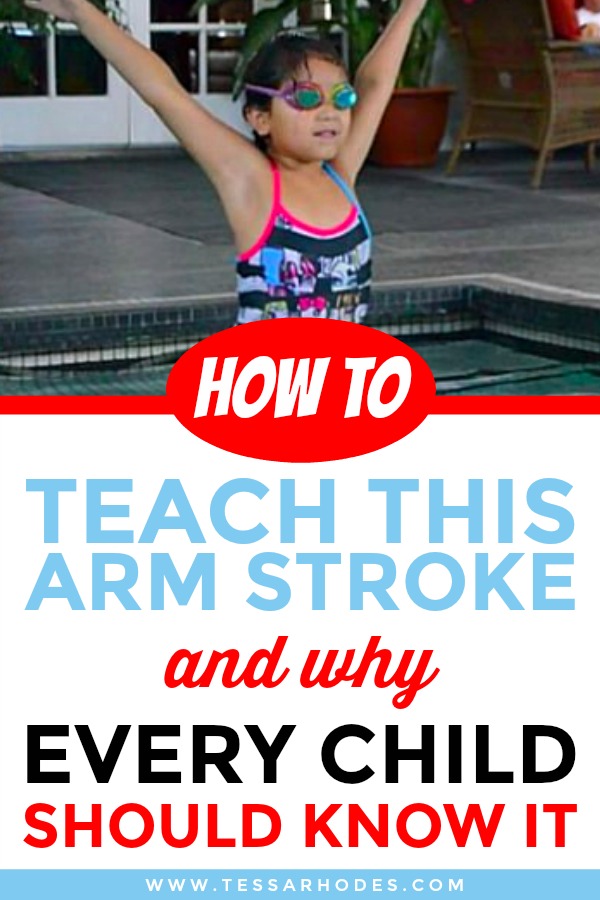
Repeat this sequence a few times, before having her try it from a back glide.
She might need a little assistance when first learning this. Support her head while she works out the movements.
She might lift her hands out of the water when transitioning from the duck to the starfish position. Encourage her to keep her hands submerged during the entire stroke.
The sweeping action that takes place from the starfish to the penguin position should be performed forcefully with straight arms.
The penguin position should be held for two or three seconds, before repeating the sequence.
This arm action is part of a formal swimming stroke called the elementary backstroke. The elementary backstroke is also known as a resting stroke since it takes minimal effort to cover tremendous distances.
Mastering this arm stroke is essential. It could potentially save your child’s life. Having the capability of propelling through the water with little to no effort and being able to breathe in the process is a life-saving skill and should always be the go-to stroke when fatigued, and breathing is necessary.

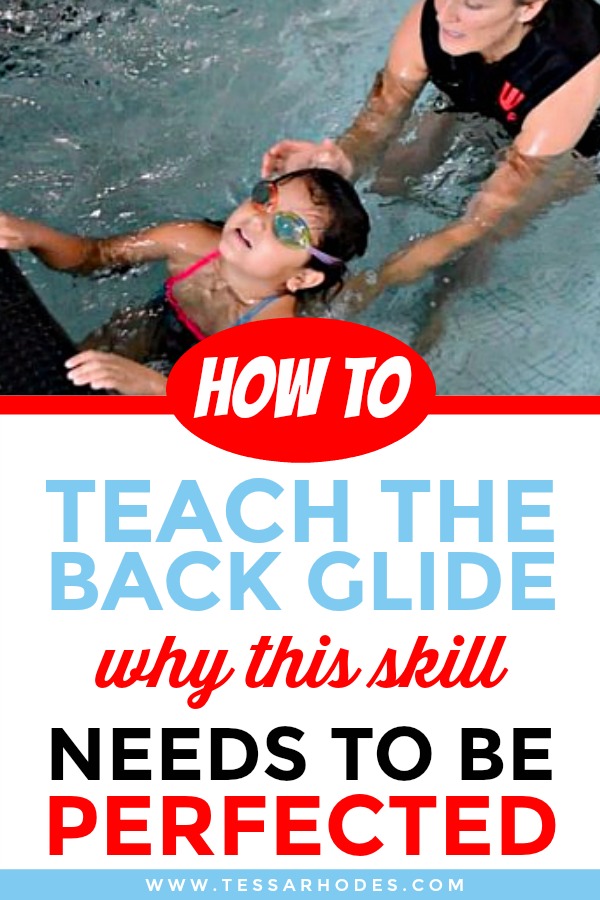
Your website is wonderful. It was very helpful for me to teach my children to do back float.
Thank you for your comment. I’m so glad to hear that it’s been helpful.